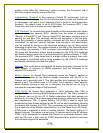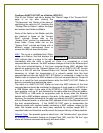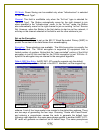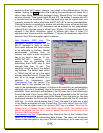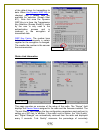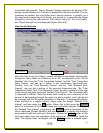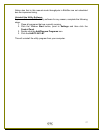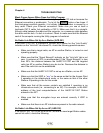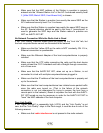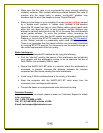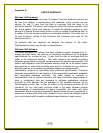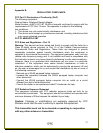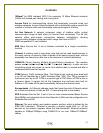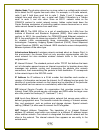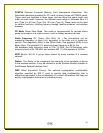
24
GLOSSARY
10BaseT An IEEE standard (802.3) for operating 10 Mbps Ethernet networks
(LANs) with twisted pair cabling and a wiring hub.
Access Point An internetworking device that seamlessly connects wired and
wireless networks. Access Points combined with a distributed system support the
creation of multiple radio cells that enable roaming throughout a facility.
Ad Hoc Network A network composed solely of stations within mutual
communication range of each other (no Access Point connected). The Ad Hoc
network offers peer-to-peer connections between workstations, allowing
communication between computers within range that have an 802.11
DSSS compatible PC card installed.
BSS Basic Service Set. A set of stations controlled by a single coordination
function.
Channel A medium used to pass data units that can be used simultaneously in
the same volume of space by other channels of the same physical layer, with an
acceptably low frame error ratio due to the absence of mutual interference.
CSMA/CA Carrier Sensing Multiple Access/Collision Avoidance The medium
access control method used by the 802.11 standard. Basically, a radio can start
transmitting signal only when no carrier from another radio is sensed and after a
randomized wait time has expired.
DTIM Delivery Traffic Indication Map The Stations that currently have data held
in an AP are identified by a Traffic Indication Map (TIM). This TIM is included in
the beacon sent by an AP. DTIM is a special type of TIM. When a DTIM is sent in
a beacon frame, it signals that all the broadcast and multicast data held for
Stations in PS mode will be sent immediately following the beacon frame.
Encapsulated An Ethernet address mode that treats the entire Ethernet packet
as a whole and places it inside an 802.11 frame along with a new header.
ESS Extended Service Set. A set of one or more interconnected Basic Service
Sets (BSSs) and integrated Local Area Networks (LANs) can be configured as an
Extended Service Set.
Ethernet The most widely used medium access method, which is defined by the
IEEE 802.3 standard. Ethernet is normally a shared media LAN; i.e., all the
devices on the network segment share the total bandwidth. Ethernet networks
operate at 10Mbps/100Mbps using CSMA/CD to run over 10BaseT/100BaseT
cables.



